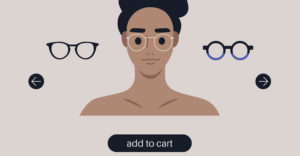Recommerce — or the online sale of used clothing and other goods — is booming, with companies like thredUP and Poshmark meeting consumer demand for more affordable and sustainable alternatives to buying new.
“I believe recommerce is popular because there is an alignment amongst people who see that consuming products as we have in the past is creating huge environmental problems, so people want to shop differently,” said Nicole Bassett, cofounder of The Renewal Workshop, which sells used apparel, bags and home goods.
“Recommerce offers people the quality they expect from the brands they love and the shopping experience of new, but with products that have a better environmental impact,” she told the E-Commerce Times.
Why Recommerce?
Saving money is a big driver in the recommerce boom, since consumers increasingly see the value in buying used brand-name goods for deep discounts.
“Recommerce has certainly seen an increase,” said Steven Bethell, founder of Bank & Vogue, a company that specializes in the logistics of selling wholesale used goods and operates a sister recommerce company, Beyond Retro.
“We certainly know that value is a big driver of why it is more popular today,” he told the E-Commerce Times. “If a customer can buy a branded item for half of the price of new, then why not?”
In fact, recommerce is becoming so popular and common that many consumers buy new items with an eye to reselling them in the not-too-distant future.
“We’re seeing a continued shift in how consumers shop, especially when it comes to shopping smarter and more sustainably,” said Sasha Skoda, head of the women’s category at the luxury consignment company The RealReal.
“We’ve seen more and more consumers wanting to know the resale value of designers and items before they make a purchase,” she told the E-Commerce Times. “They make purchases now with the intention to consign it in the future and make a significant portion back on the original cost. It’s an investment mindset.”
In addition to cost-savings, consumers find the sustainable nature of recommerce appealing.
“We’re also seeing consumers — especially millennials and Gen Z — become more eco-conscious and gravitate towards companies and practices that share those values,” said Skoda.
“That said, resale is inherently sustainable as it’s extending the life cycle of items and keeping them out of landfills,” she noted. “Based on our survey data, 56 percent of our overall consignor base, and 64 percent of our millennial consignor base, cite environmental impact or extending the life cycle of luxury items as key motivators for consigning with us.”
Success in Recommerce
Just because the items are used in recommerce sales doesn’t mean that quality isn’t important. Consumers expect the items they buy in this way to be as close to new as possible, and from brands they recognize, know and trust.
“The key to success in recommerce is being able to offer a certified high-quality product,” noted Bassett. “The Renewal Workshop offers this for our brand partners — products that are cleaned, repaired and certified to a like-new quality. We also offer a shopping experience that has high-quality photography, ease of search and shipping.”
It’s important for recommerce companies to understand that consumers buying used items still expect trendy, quality products.
“Critical to the success is being trend-aware,” observed Bank & Vogue’s Bethell. “Besides good value, our consumers want to be buying products that reflect modern trends, from mom jeans to a Mickey T. It has to be the right item.”
The founder and CEO of The RealReal, Julie Wainwright, saw an opportunity to bring clothes like Prada dresses out from the back of resell shops and into the mainstream. The RealReal has experts who ensure the authenticity of its luxury items, and it then curates those items so that shoppers can purchase them in a trusted, high-end environment.
The RealReal claims to be the only resale company in the world that authenticates every single item it receives.
“Our experts are also providing valuable information about resale value and trends. We’re making sure that consignors are getting the best return on their investment. That transparency is in turn providing consumer confidence,” a RealReal spokesperson said in comments provided to the E-Commerce Times by company rep Magan Zamiska.
“In addition, we’ve made the process of consigning easy for our consignors. We offer free in-home pickups, brick-and-mortar locations for dropoffs, and the option to send items to us directly for free,” the spokesperson continued.
“Our physical stores have been an important extension of the brand and allow us to expand our service offerings. We’ve seen that the stores have been a great way to introduce luxury consignment to those who aren’t quite comfortable shopping online for more high-value items,” the RealReal spokesperson pointed out. “People can touch, feel, and see the products.”
In addition to expecting high-quality goods, recommerce consumers expect a wide selection.
“Selection is critical to why we have 35,000 items on Beyond Retro,” said Bethell. “We are excited to see this being a great platform for our remanufactured goods, so we are not only selling vintage, but also mended items and items that are fully remade, [like] a tote Beyond Retro remade from Carhartt workwear into a tote for Urban outfitters. It’s trend-relevant, fabric-relevant and innovative: That’s what we are seeing in the evolution of recommerce.”
The Future of Recommerce
Recommerce is definitely evolving from the early days of thrift stores. These days, it’s a thriving global business.
“Recommerce is becoming a better shopping experience over time,” said Bassett. “In the beginning, we didn’t know what the customer valued. Now we know that customers want the product data from the original product, so we have to provide this to the customer. I see that we will see more product types also being sold in renewed.”
As it becomes more commonplace, recommerce likely will evolve to become an integral part of the fashion world.
“As more and more consumers continue to recognize resale as a smart, sustainable alternative to shopping fast fashion, it will only continue to grow,” Allison Sommer, director of strategic initiatives for The RealReal, told the E-Commerce Times. “I also see resale becoming a built-in part of the luxury fashion ecosystem as brands continue to embrace it.”























































